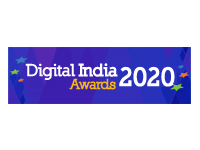The ENVIS network with its 21 nodes continued its activities in information collection, collation, storage, retrieval and dissemination to its users during the year. The ENVIS nodes, known as ENVIS centres in 21 subject specific areas and the Focal Point in the Ministry constitute the ENVIS network. A list of such ENVIS centres is given at the end. The Focal Point of ENVIS and its network partners laid emphasis on the development of its information-base by creating comprehensive databases and strengthening information resource repository in the concerned subject area. Major activities of the ENVIS Focal Point and its various centres during the year are as follows:
Focal Point
-
The ENVIS Focal Point continued to publish the quarterly journal namely `Paryavaran Abstracts' reporting information on environmental research in Indian context. More than 600 national and international environmental related journals are referred to for compilation of relevant abstracts for inclusion in this publication. The abstracts are arranged under major categories like air pollution, water pollution, noise pollution, environmental management, ecology, health and toxicology, environmental legislation, forestry, wildlife, etc.
-
The ENVIS network, during the year, responded to a total number of 9779 querics of which 8880 were national and 899 were international. Out of these total queries, ENVIS Focal Point alone responded about 540 queries during the year. Efforts were made by the network to provide substantive information as far as possible to all the queries mentioned above and in some cases where it was not readily available, referral services were provided to the users.
-
The Focal Point also continued its efforts for networking all the the ENVIS centres through ERNET programme of the Department of Electronics. Out of these 21 centres, 12 centres have been provided with modem and other software support to install E-Mail facilities in their respective centres. Necessary steps have also been taken to provide these facilities to the remaining centres for easy and quick dissemination of information as well as for online communication to the various centres and to the Focal Point vice-versa.
-
During the year steps have been taken to set up two new centres in the fields of "forestry" and "wildlife" at Forest Research Institute, Dehradun and Wildlife Institute of India, Dehradun respectively as recommended by the Scientific Advisory Committee of ENVIS.
-
The Library in the Ministry is an integral component of ENVIS and as document repository for dissemination of information in the field of environment and its associated areas. During the year, the Library enriched its documentary-base by procuring an additional number of more than 350 books, documents, journals, state of art report etc. so that it could provide the back-up support to ENVIS in disseminating substantive information to its users.
-
During the year, more than 300 national and international scientific journals were received in the Library and various other subject related documents have been identified for procurement. Automation of the Library has been made by using suitable software package expedite the retrieval of the documents provided by the Library. Scholars from various institutions in Delhi made use to the Library in the Ministry during the year. The Library is also equipped to provide reprographic services not only to ENVIS users but also to other divisions of the Ministry. Apart from the technical books, journals, proceedings, etc. Library also procured a wide range of general books, magazines, notable literatures during the year both in Hindi and English for the use of the officials of the Ministry and its associated offices.
-
ENVIS also continued to function as a National Focal Point (NFP) and a Regional Service Centre (RSC) for the South Asian Sub Region countries for INFOTERRA network, a global information network of the United Nations Environment Programme (UNEP). As a RSC of INFOTERRA the ENVIS network provided information to Bangladesh, Sri Lanka, Nepal, Pakistan and Bhutan in response to the queries received from them.
-
ENVIS also continued its close liasion with various other national information systems in the country for exchange of environmental information and to avoid duplication of efforts in the fields of environment and its associated areas.
-
During the year, the ENVIS Focal Point coordinated the publication to the Annual Report (95-96) of the Ministry.
-
Based on the performance of the ENVIS and its network partners, it has been designated as the National Focal Point of the Sustainable Development Network Programming (SDNP) of UNDP. ENVIS has already taken several steps to initiate its activities in this regard.
Activities of the ENVIS Centres
All the ENVIS centres continued their activities related to collection, storage, retrieval and dissemination of information on the subject areas allotted to them. Besides strengthening the data bases and responding to various national and international queries all the ENVIS centres carried out a variety of activites aimed at disseminating information to wide range of users. Highlights of some of the activities of the ENVIS centres are given below:
-
The ENVIS Centre on Control of Pollution at the Central Pollution Control Board (CPCB) continued to publish thematic issues of the Newsletter `Parivesh' on themes such as air pollution and its control, ground water quality, coastal pollution, bio-monitoring, etc. The CPCB brought out nearly 20 publications/booklets/reprints under various series and two new series on "Groundwater Quality" and "Information Manual on Pollution Abatement and Cleaner Technology" were added during the year. A total of 1855 queries on various aspects of pollution were answered by this Centre.
-
Apart from continuing its regular activities, the ENVIS Centre on Toxic Chemicals functioning at ITRC, Lucknow has developed a computerised data base on toxic chemicals including information on 50 chemicals. On the basis of information and literature provided by the ENVIS Centre, the U.P. Department of Environment has developed guidelines for assessment and identification of waste disposal sites in Lucknow district. The Centre also helped the U.P. SPCB to identify various categories of hazardous wastes. Publication of ENVIS Newsletters and Abstracts of Current Literature in Toxicology was continued.
-
The DAINET (Development Alternatives Information Network) operated by the ENVIS Centre at the Society for Development Alternatives (SDA), New Delhi continued to collect, store and dissiminate information related to environmentally sound appropriate technology and environmental management. During the year existing database of the ENVIS Centre were parted on the RDBMS platform. A NGO directory is also being designed and developed on the RDBMS platform. A web page of the SDA has been set up on the Internet.
-
Computerisation of the data base is being continued at the ENVIS Centre on Biodegradation of wastes and Environmental Impact Assessment functioning at the Centre for Environment Studies, Anna University, Chennai. The database includes a listing of over 5000 papers on the two subjects allocated to the Centre. The ENVIS Library has over 800 books/reports on the subjects. E-mail facility is operational and about 40 research personnel made use of this service during the year. About 324 queries were received and processed by this Centre.
-
A new journal "TERI Information Monitor on Environmental Sciences" has been launched by the ENVIS Centre on "Energy and Environment" functioning at the Tata Energy Research Institute (TERI), New Delhi as the ENVIS Newsletter. The journal contains review articles, bibliographies, abstracts of recent literature, book reviews, etc. relating to the subject area allotted to the centre. During the year, the database was updated by adding about 1000 bibliographic references and about 600 reprints. The ENVIS centre at TERI also contributed to the preparation of the project proposal on "Environmental Management Capacity Building" assigned to TERI by Ministry.
-
The "Third Environmental Status Reports of Madhya Pradesh" was brought out by the ENVIS Centre at EPCO, Bhopal during the year. It also published three issues each of "Madhya Pradesh Paryavaran" and ENLAW and circulated them among NGOs, government departments, educational institutions, etc. Information about 250 NGOs functioning in the state of Madhya Pradesh, has been stored in the computer and is made available to users on request. Several camps and workshops were also organised jointly with EPCO for different target groups.
-
The ENVIS Centre on `Desertification' functioning at the Central Arid Zone Research Institute (CAZRI), Jodhpur has created a database on "Desertification and Soil Science" using CDS/ISIS software package, which is being updated regularly. Searches on the database can be made through author(s), title, subject, keywords and serial numbers. A fortnightly `Current Awareness Bulletin' relating to soil conservation and desertification and newspaper clipping service are being provided. A Bibliography on Desertification, Soil Conservation and Environment (upto 1995) has been compiled. The centre continued to provide material for inclusion in the "Paryavaran Abstracts" being brought out by the Focal Point at the Ministry.
-
Information continued to be added to the EE bank being maintained by the ENVIS Centre on Environment Education functioning at the Centre for Environment Education, Ahmedabad. Workshops were held at Ahmedabad, Bangalore, Guwahati and Pune to help educators access the information, adapt it for their use and develop locale-specific EE material. Six issues of the networking newsletter "News EE", and a bibliography of "Readings on the North East" were brought out during the year. Work on updating the Directory of NGOs in EE in the North East has been completed.
-
The subject alloted to the ENVIS Centre at the Zoological Survey of India, has been changed to `Faunal Bio-diversity" from Animal Ecology to reflect the scope of its subject coverage. Application software for storage, retrieval and dissemination of data has been developed by the staff of the ENVIS Centre. Data of 12 species of vertebrates listed in Schedule I of the Wildlife (Protection) Act 1972 and all the genera of butterflies belonging to the family Lycaenidae occurring in India, Pakistan, Sri Lanka, Nepal, Bhutan, Bangledesh and Myanmar have been entered into the computer. 4000 bibliographic references on bio-diversity and ecology of Indian animals have also been stored electronically.
-
The ENVIS Centre on Solid Waste including hazardous waste at NEERI, Nagpur actively disseminates information on the subject by regularly publishing the highlights of the R&D work carried out at NEERI on Solid and Hazardous Waste Management. The Centre has also acquired several national and international databases on the subject which are searched regularly to provide service to the users.
-
The bibliographic database developed by the ENVIS Cente on Himalayan Ecology at the G.B. Pant Institute of Himalayan Environment and Development has more than 500 abstracts, research papers & technical reports on the subject, collected from the universities/institutions/research stations located in the 12 Himalayan States of the Country. Records of more than 200 scientific and technological personnel working on various aspects of Himalaya have also been collected. Socioeconomic data of the region is being collected from the Information Centres of the District Statistical offices of 72 districts spread over 12 states. ENVIS Bulletin was continued to be published.
-
The ENVIS Centre on Human Settlements functioning at the Centre for Environmental Studies, School of Planning and Architecture has collected data spanning four decades pertaining to six mega cities of the country with a view to studying the trends of development in these cities. City profiles and trends of demographic growth of cities/urban areas of the country in the more than one million population are also being studied. Data has been collected on various parameters to determine the human environment and quality of life in the four metropolitan cities. A seminar on "Environmental Quality of Human Settlements" was organised by this centre and an report of the presentations has been published.
-
The ENVIS Centre on Biogeochemistry and Environmental Law located in the School of Environmental Sciences, JNU has so far loaded 7942 references on Biochemistry and Environmental Law, in the computer. An "International Workshop on Environmental Legislation and Management for SAARC Countries" sponsored by the Ministry of External Affairs was organised by the Centre during 23-25 October, 1996. CD-ROM's related to Biogeochemistry and Environmental Law are proposed to be acquired to under the scope of its databases. ENVIS Newsletter continued to be published.
-
The ENVIS Centre on Floral bio-diversity (previously plant ecology) located at the Botanical Survey of India (BSI), Calcutta is engaged in collecting data on plant diversity, plant econlogy and on plants of coastal and marine ecosystems. An applications software has been developed for the database on rare and endangered plants. E-mail connection has been set up and publication of the ENVIS Newsletter was continued.
-
The database on Eastern Ghats, being developed by the ENVIS Centre at the EPTRI, Hyderabad consists of non-bibliographic and bibliographic components. The non-bibliographic database is being developed using remote sensing data and GIS and mapping of the entire Eastern Ghats of Andhra Pradesh in 1:1 million scale has been completed. During the year mapping of a few selected areas in 1:50,000 scale has been undertaken, based on which a model decision support information system will be developed. The bibliographic database has been developed using CDS/ISIS and it consists of records and references of all literature on Eastern Ghats available at EPTRI. The ENVIS Newsletter continued to be published.
-
The ENVIS Centre on Avian Ecology and Inland Wetlands at BNHS, formally inaugurated by former Secretary (E&F) in June, 1996 has initiated the creation of a database on the subjects allotted to it. Bibliographic data is being entered into the computer using both d-base and access software. The first issue of the ENVIS Newsletter was published in September 1996.
-
The ENVIS Centre at Annamalai University in the subject area of mangrove, coral reefs, estuaries and lagoons continued to publish the ENVIS Newsletter in the subject area disseminating information to all concerned. The draft state-of-the-art report on estuaries, mangroves, coral reefs and lagoons have been prepared by the centre during the year which will be published soon after the comments from the various experts. Besides the centre continued to strengthen its data-base in these subject areas by procuring the latest ASFA (Aquatic Sciences and Fisheries Abstracts) diskettes and other abstracts of literature in the specified subject areas.
-
The ENVIS Centre at the National Institute of Occupational Health, Ahmedabad continued to publish its quarterly publication namely, "Environmental Information" to disseminate the latest information on various aspects of occupational health. Monographs on different compounds having health hazardous index were also published by the centre during the year.
-
The ENVIS Centre at WWF-India, New Delhi has established an Internet Website for WWF-India on an experimental basis. Data relating to the questions and answers on environmental handled in both the houses of Parliament from 1994 is being entered with a view to publishing the same.
ENVIS Centres
1. Central Pollution Control Board, Delhi.
2. Industrial Toxicological Research Centre, Lucknow.
3. Society for Development Alternatives, B-32, Institutional Area, Tara Crescent, New Mehrauli Road, New Delhi.
4. Centre for Environment Studies, College of Engineering, Anna University, Madras.
5. Tata Energy Research Institute (TERI), New Delhi.
6. Centre for Ecological Sciences, Bangalore.
7. World Wide Fund for Nature, New Delhi.
8. Environmental Planning and Coordination Organisation, Bhopal.
9. National Institute of Occupational Health, Ahmedabad.
10. Central Arid Zone Research Institute, Jodhpur.
11. Centre for Advanced Studies in Marine Biology, Annamalai University, Parangipettai.
12. Centre for Environment Education, Ahmedabad.
13. Zoological Survey of India, Calcutta.
14. Centre of Mining and Environment, ISM, Dhanbad.
15. National Environmental Engineering Research Institute Nagpur.
16. G.B. Pant Institute of Himalayan, Environment & Development, Kosi-Katarmal.
17. School of Planning and Architecture, New Delhi.
18. School of Environmental Sciences, JNU, New Delhi.
19. Botanical Survey of India, Calcutta.
20. Environmental Protection Training and Research Institute, Hyderabad.
21. Bombay Natural History Society, Mumbai.
-------
* Source: Ministry of Environment and Forests Annual Report, 1996-97





















